Best
STUDENT CLARINET
-
Overall: Yamaha clarinet with Boehm key system featuring 17 keys and six rings
-
Best Feature: Matte ABS plastic clarinet, barrel, and bell provide enhanced durability
-
TedScore™: 8/10
Best
OVERALL
CLARINET
-
Overall: Made from naturally-aged grenadilla wood
-
Best Feature: Silver-plated key tone holes and black leather pads deliver reliable performance
-
TedScore™: 9/10
Best
HIGH-END
CLARINET
Bass Clarinet Versatile
Student Clarinet
-
Overall: Grenadilla wood, body, and barrels
-
Best Feature: Silver-plated Boehm-system
keys with an Eb lever -
TedScore™: 9/10
Are you curious if the clarinet is hard to learn?
I still remember the first time I held this smooth, shiny woodwind, feeling excited and nervous. It was like starting a fun adventure that offered beautiful tunes and the happiness of making music.
But here’s a secret: getting good at the clarinet can be as easy as its beautiful sound, especially if you have the right attitude and approach.

So, if you’re interested in bringing music to life with a clarinet or want to understand this musical adventure better, stay tuned. I have some helpful tips that will make this journey enjoyable.
Keep reading, and I’ll show you how learning the clarinet can be an experience that sings to your soul.
Developing Fundamental Skills
Laying solid groundwork is vital to mastering the clarinet, and taking time to refine fundamental skills makes all the difference.
Beginners should be patient with themselves as these basics will pave the way for advanced play.
Breathing and Embouchure

My cheeks puff a bit when I recall my early clarinet attempts. Getting a pleasant sound hinges on your embouchure—that’s how you position your mouth on the mouthpiece.
With the reed snug against your lower lip and teeth just grazing the mouthpiece top, it’s a delicate balance to get just right. As for breath support, deep breaths from your diaphragm are essential—trust me, it’s not just about puffing your cheeks!
Tonguing and Fingering Techniques

Now, let’s talk about tonguing – how you articulate notes to make them sound crisp. I gently touch the reed with the tip of my tongue to start and stop notes; it’s a technique that takes practice but adds clarity to your music.
The fingering chart became my best mate early on, helping me place my fingers correctly to hit the right notes. And remember, learning the proper hand position is vital to avoid strain and ensure agility.
Reading Music and Scales
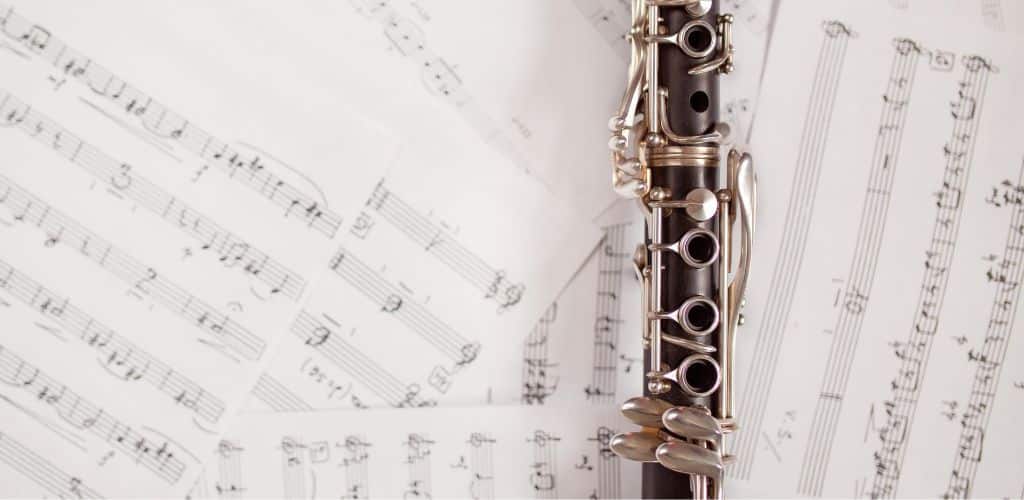
When I first started, reading music felt like deciphering ancient runes. But as I practiced, the notes and rhythms became familiar friends.
Scales are the ABCs of music; playing them improves my finger strength and dexterity daily. Understanding and practicing scales are critical for beginners, as they form the building blocks of most musical pieces.
Keep a close eye on key and time signatures; they’ll guide you through the melody like a map.
Overcoming Common Challenges for Beginners
I’m quickly introduced to a couple of hurdles when embarking on the clarinet adventure. But fret not; guidance makes even the trickiest of challenges manageable.

Producing a Clear Tone
First, I ensure my reed isn’t too soft or too hard, as it’s the cornerstone for producing a lovely sound.
A consistent practice routine focused on breath support and embouchure (how I shape my mouth and use my facial muscles) is critical. And yes, it takes a good deal of dedication, but the sound of a single beautiful note is ever so rewarding!
Avoiding Squeaks and Mistakes
Now, squeaks are the bane of any clarinetist’s life, and I’m no exception. These pesky little mistakes usually mean I should check my fingering; my right and left hands must work in perfect harmony.
One of the crucial elements in clarinet playing is controlling the air stream to produce the desired tones and expressiveness.
I’ve found that slowing my pace and being mindful of each finger placement helps me steer clear of those unwelcome guests. Practice might not make perfect, but it makes progress – and with enough of it, I wave goodbye to my squeaky days.
Understanding the Basics of the Clarinet
Starting the clarinet journey is so exciting! Let’s uncover the basics to ensure you get off to a great start.
Components and Assembly
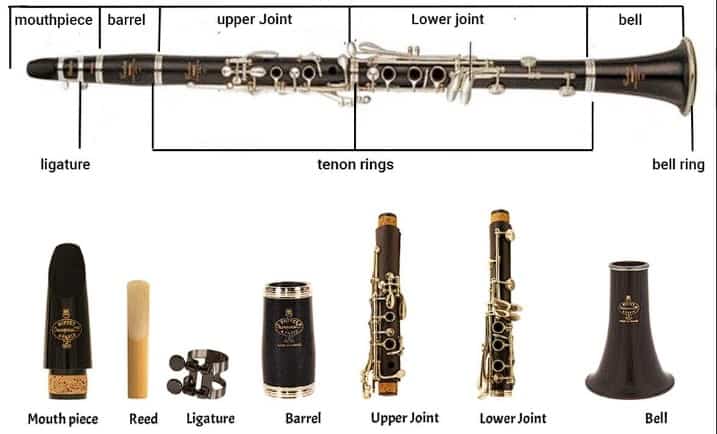
It is fascinating how a clarinet comes to life by piecing together its parts. The components start with the mouthpiece, where you’ll attach your reed—which is essential for producing sound.
Your embouchure, or how your mouth grips the mouthpiece, must be firm yet gentle. Next comes the barrel, which attaches to the upper joint, home to many keys your fingers will dance over.
The lower joint follows, housing more keys and connecting to the bell, giving the clarinet its characteristic shape and sound. Remember the long, slender body? That’s the cylindrical bore, a critical aspect affecting the instrument’s tone.
And don’t forget the thumb rest! It helps you hold the instrument properly without straining your hands.
Basic Fingering and Posture

Getting a grip on basic clarinet fingerings are crucial. It starts with the top keys and moves downwards, each finger playing its role in melody-weaving.
Regarding posture, keep your back straight and feet flat on the ground, as if you’re the queen guarding her castle. This isn’t just about looking regal; it’s about breathing life into your music.
A relaxed posture helps with breath control, a must for a rich, consistent tone. Keep those fingers curved and agile, ready to hop between keys like a happy frog in a pond.
Starting with simple scales will train your fingers and embed the feel of each note. Take it slow and let muscle memory build its empire in your hands.
Advancing Your Clarinet Skills
Mastering the clarinet involves not only understanding the instrument itself but also delving into music theory to grasp the intricacies of musical composition.

Mastering Clarinet Registers
When you start exploring, you’ll realize that each register has a quirky personality.
Trust me, working with a clarinet teacher speeds up this process. They can guide you through the tricky fingerings and help you transition smoothly between registers.
Through dedicated practice and guidance from a knowledgeable clarinet teacher, students can unlock the beauty and versatility of this captivating woodwind instrument.
Selecting the Right Clarinet and Accessories
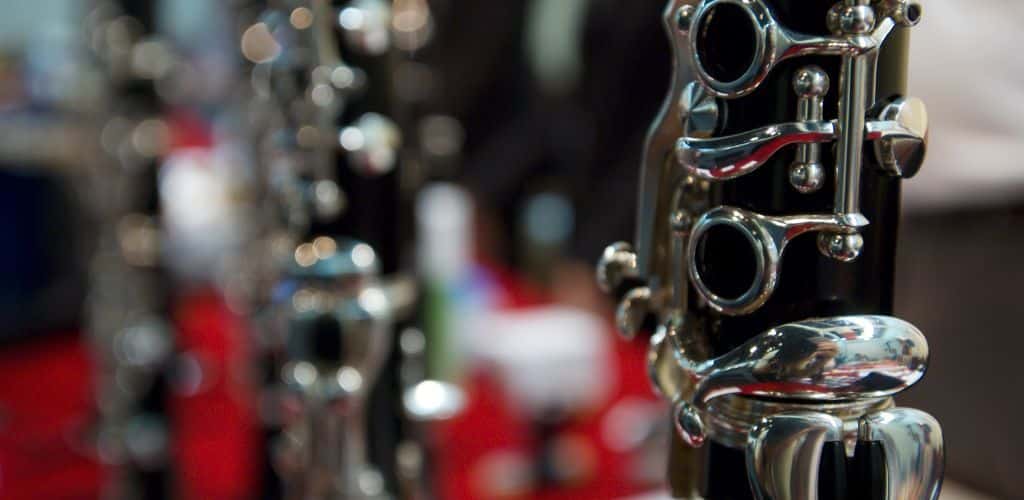
Choosing the right clarinet and accessories is as crucial as the playing technique.
Quality instruments and the proper attachments are an investment in your musical journey, ensuring a sound that charms and techniques that flourish.
Clarinet Brands and Materials
When I was starting, I happened upon the joyful quest of picking my first clarinet. Among the many brands, Yamaha, Backun, and Royal stood out as reliable heavyweights in the clarinet world.
Yamaha often comes to mind; their beginner clarinets strike a delicate balance between quality and affordability.
On the other hand, Backun is the darling of many professional players – their clarinets are known for superb craftsmanship.
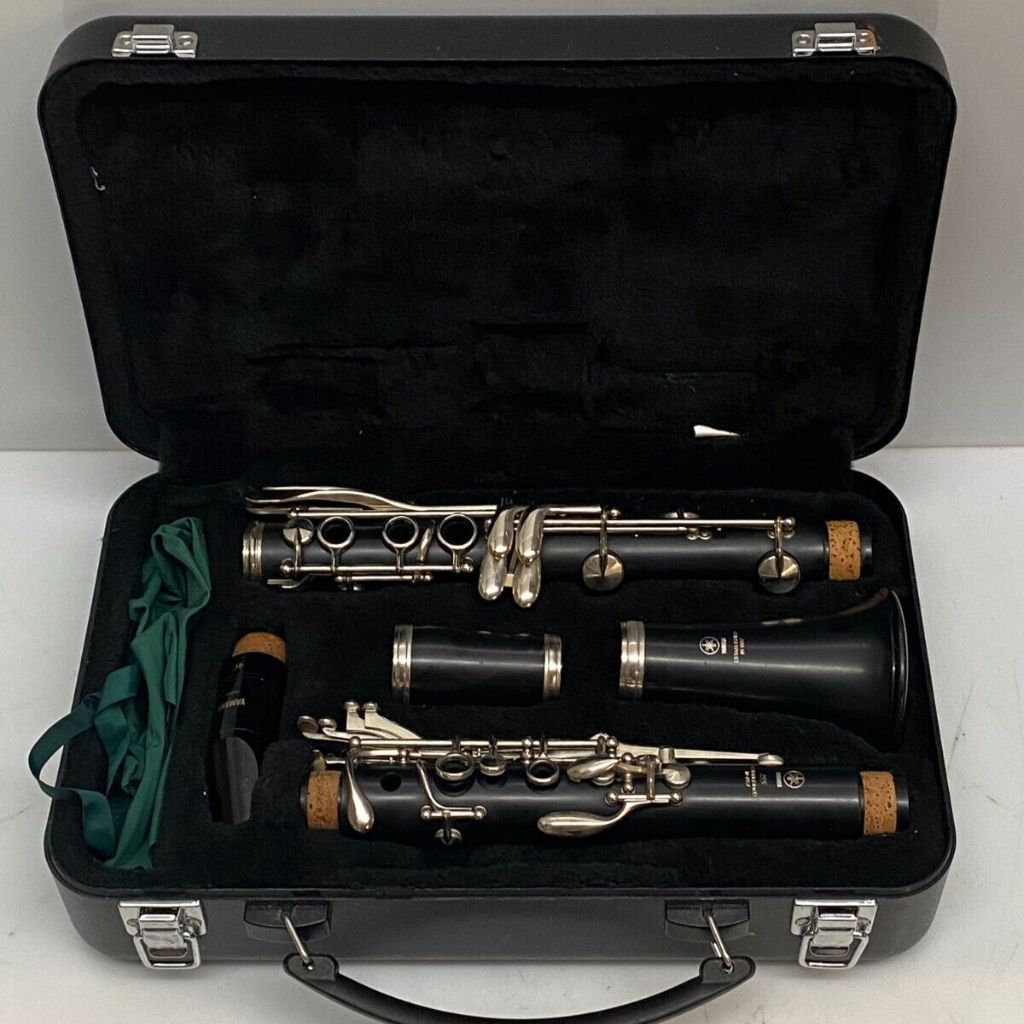
Yamaha YCL-255 Student Clarinets

FEATURES: Yamaha clarinet with Boehm key system featuring 17 keys and six rings
OTHER INFO: Matte ABS plastic clarinet, barrel, and bell provide enhanced durability
- The resonance chamber in the bell enhances projection
- Includes a 4C mouthpiece — an ideal choice for developing players
- It comes with a Yamaha CLC-180 case
- Some players may prefer the traditional feel of wooden clarinet and tonal qualities
When you click ‘Check Price’, you’ll see there are loads of great places to buy this item. Our personal favorite is Sweetwater for the US, and Thomann and Gear4Music for the UK & Europe.
They are the largest music retailers, with excellent customer service, competitive prices, really fast shipping, and the longest guarantees.
The professional musician who wrote this article combined many things,
from the product build, manufacturer’s reputation through to feedback
from other users, to create our famous TedScore™.
The Backun Beta Intermediate Bb Clarinet features a high-quality grenadilla wood body and silver-plated keywork, providing a rich, warm tone and smooth, reliable action.
Its ergonomic design and precision craftsmanship make it an excellent choice for advancing students seeking a professional feel and sound.
Backun Beta Intermediate Bb Clarinet
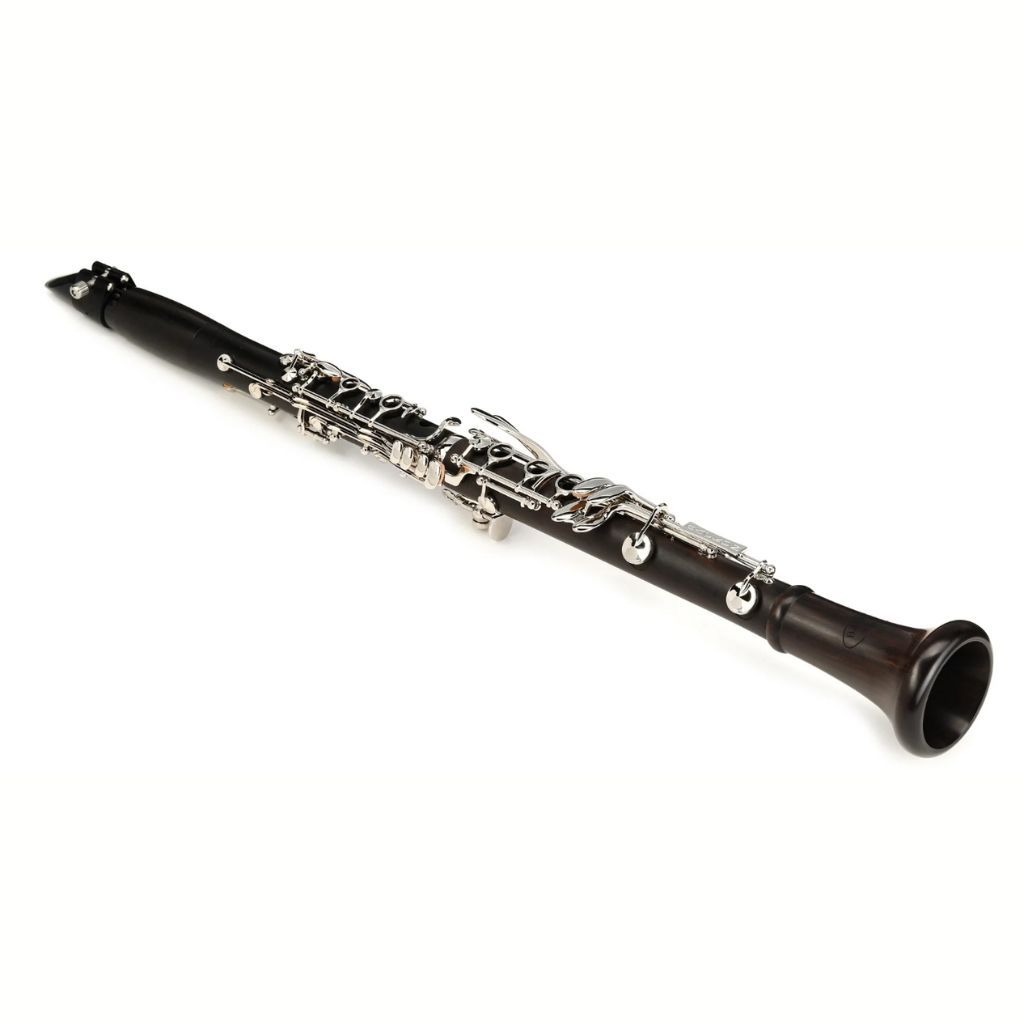
FEATURES: Made from naturally-aged grenadilla wood
OTHER INFO: Silver-plated key tone holes and black leather pads deliver reliable performance
- Adjustable thumb rest with neckstrap ring
- Includes Backun Protégé mouthpiece, Rovner Dark ligature and cap, and Légère Signature synthetic reed
- Comes in a backpack-style case
- The Backun Beta may involve longer waiting periods for purchase or delivery than other intermediate clarinet models
When you click ‘Check Price’, you’ll see there are loads of great places to buy this item. Our personal favorite is Sweetwater for the US, and Thomann and Gear4Music for the UK & Europe.
They are the largest music retailers, with excellent customer service, competitive prices, really fast shipping, and the longest guarantees.
The professional musician who wrote this article combined many things,
from the product build, manufacturer’s reputation through to feedback
from other users, to create our famous TedScore™.
The Royal Global Polaris Bass Clarinet features a grenadilla wood body and a low C extension, delivering a rich, resonant tone with exceptional projection.
Its ergonomic key design and precise intonation make it an excellent choice for professional musicians seeking superior playability and sound quality.
Royal Global Polaris Bass Clarinet
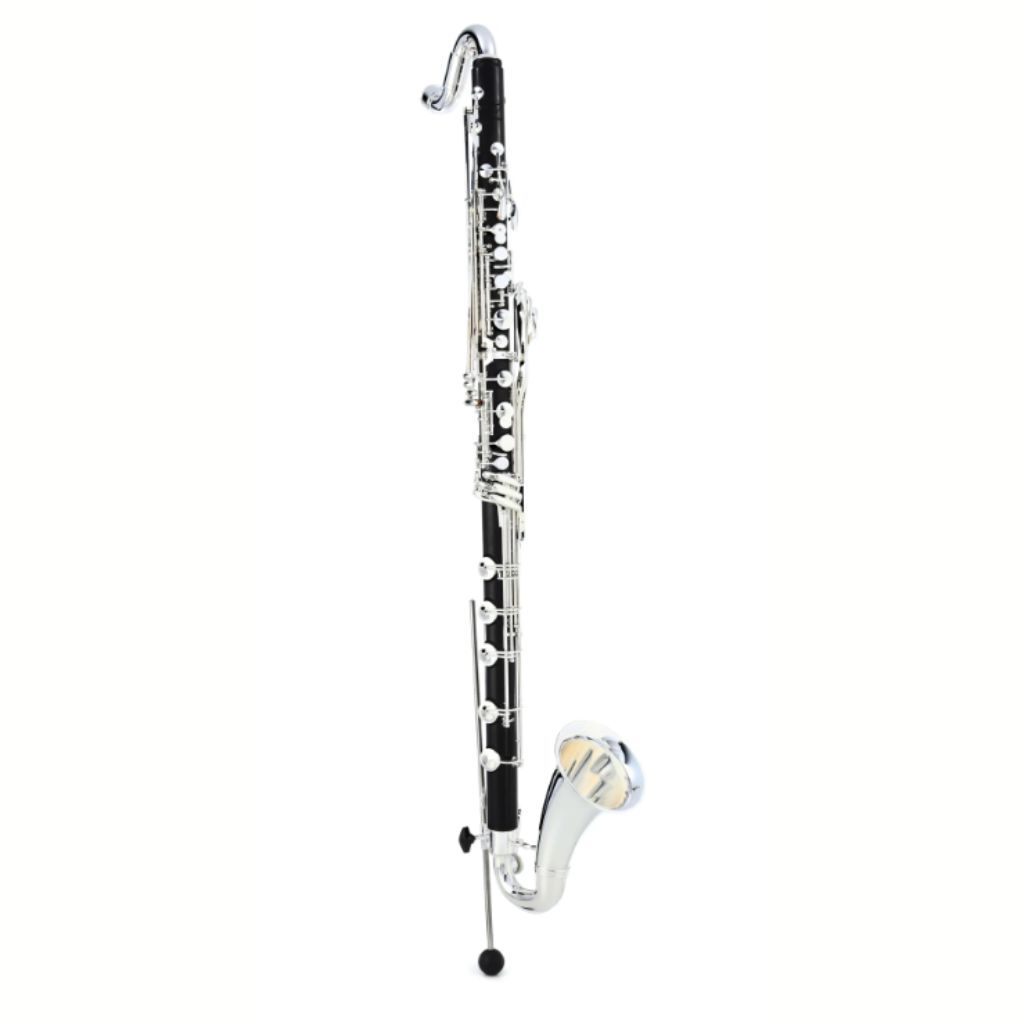
FEATURES: Grenadilla wood, body, and barrels
OTHER INFO: Silver-plated Boehm-system keys with an Eb lever
- Includes Leblanc nickel ligature and hardshell case
- Often require meticulous care and maintenance to preserve their optimal performance
When you click ‘Check Price’, you’ll see there are loads of great places to buy this item. Our personal favorite is Sweetwater for the US, and Thomann and Gear4Music for the UK & Europe.
They are the largest music retailers, with excellent customer service, competitive prices, really fast shipping, and the longest guarantees.
The professional musician who wrote this article combined many things,
from the product build, manufacturer’s reputation through to feedback
from other users, to create our famous TedScore™.
Looking at materials, I found that entry-level clarinets were typically made of ABS resin or similar plastics, mimicking the sound and feel of professional wooden instruments.
Material choice plays a vital role in sound quality and maintenance requirements for a Bb clarinet, which is the standard go-to for beginners.
As I progressed, I learned wooden clarinets offered rich tonal qualities but required more TLC to keep them in tip-top shape.
Reeds, Ligatures, and Maintenance

Now, let’s chat about reeds – the tiny yet mighty dynamos of your clarinet’s voice. Starting with a strength of 1.5 to 2 for your reed is advisable as you ease into clarinet mastery.
Don’t forget that the ligature, that little metal piece anchoring the reed to the mouthpiece, should secure it firmly yet not stifle it.
A gentle heads-up: regular maintenance using cork grease and replacing pads when necessary will keep your clarinet sounding like the day it first caught your ear.
It’s like taking your clarinet for a spa day. Professional players will tell you that some care and occasional adjustments make all the difference, affecting everything from tone to ease of play.
Is Clarinet Hard to Learn:
Finale
Learning to play woodwind instruments, such as the clarinet, can be a rewarding journey for any music enthusiast. It may come with challenges, but isn’t that part of the fun?
You’ll need to get comfortable with the embouchure—the way you hold your mouth—and the finger placements—it’s a bit like learning a secret handshake.
Once you’ve mastered those basics, practice becomes your daily chat with an old pal. An hour a day could have you chatting proficiently on the clarinet within six months!
And trust me, once you start getting the hang of it, the joy is utterly contagious.

They say mastering the clarinet can take a good year or two, but remember that mastery is a lofty goal. Let’s pat ourselves on the back for each new tune and trill we manage—every small victory is a step towards becoming instead ace at it.
With a bit of dedication and love for the music, the clarinet might just become part of your identity.
Every instrument has its quirks, and the clarinet is no different with its unique allure. Whether you’re weaving through the warm low notes or soaring high with the piercing highs, the clarinet’s versatile sound is a true delight.
So, keep at it; before you know it, you’ll be part of the clarinet’s captivating charm.
Before you go…
Check out this article for valuable insights into the best reeds for clarinet players of all levels.
FAQ's
The time it takes to learn the clarinet varies for different individuals. Still, with consistent practice and dedication, many people can start playing simple tunes within a few months to a year. Mastery and proficiency, however, can take several years of regular practice and learning.
Learning the A clarinet compared to the flute can vary depending on individual preferences and strengths, as each instrument presents its own unique challenges. Some may find the A clarinet more challenging due to its embouchure and fingerings, while others may find the flute’s breath control and fingerings more demanding.
The difficulty of learning guitar or clarinet can vary based on individual preferences and aptitude. Mastering the guitar may be challenging due to the complexity of finger placements and strumming techniques, while the clarinet demands dedicated practice to develop proper embouchure and breath control. Ultimately, the difficulty of learning musical instruments depends on the individual’s musical goals, commitment, and learning style.
Mastering the piano can be more challenging due to the complex coordination required for both hands. However, learning the clarinet may also pose difficulties regarding breath control and mastering the unique embouchure of the musical instrument.











I found the piece on selecting the right clarinet and accessories most enlightening. I had no idea there was so much variety.
I’ve been trying to get back into playing the clarinet after a long break. The fingering techniques and avoiding squeaks sections were incredibly helpful! It’s like you’ve read my mind, Lucy Downer. Looking forward to putting all this into practice.
is clarinet really hard to learn asking for a friend
Honestly, the whole ‘is clarinet hard to learn’ section had me laughing. All instruments have their challenges, right? But yeah, clarinet ain’t exactly a walk in the park if you’re doing more than hot cross buns.
Absolutely loved the section on mastering clarinet registers! It’s something a lot of beginners struggle with, including myself when I started. Getting those transitions smooth can really elevate your playing. Keep these tips coming, they’re super helpful!
In the section about mastering clarinet registers, could you elaborate on exercises for transitioning smoothly between them? Struggling a bit with that part, and any specific tips would be greatly appreciated!
Great question, Sam T.! Struggled with this too until practicing scales as suggested here.
Sam T., working on scales with a focus on crossing the break can really help. Start slow and gradually increase speed. Breath support is key!
hey, so i just started learning the clarinet & i’m wondering if the clarinet brands really make a big diff? like, will it affect how i play as a beginner or is it more of a pro thing? thx 🙂
Hey Ellie, brand can matter in terms of build quality and sound. But for beginners, focus more on something comfortable and budget-friendly.
Just picked up a clarinet at a yard sale and stumbled upon this guide! The assembly part was a life saver. Thanks Lucy Downer!